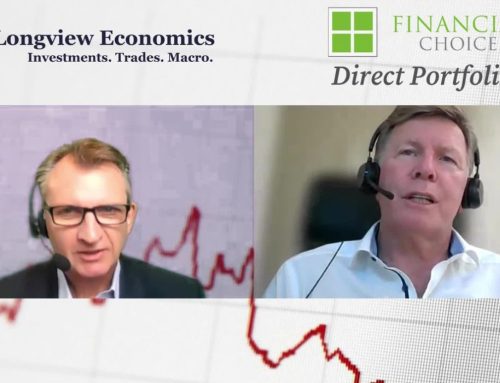With the latest hike in interest rates resulting in further deterioration of property values, I thought it might be time to point out why the governments cannot afford to go too hard, too soon.
There are many large and powerful institutions that have a vested interest in rising property prices, but all levels of government (i.e., federal, state and local) probably have the most to gain. Government tax revenues are dependent upon rising prices and demand for property.
It’s worth mentioning that most politicians invest in property. According to Crickey, 227 federal politicians own 510 properties. Of these, 84 (37%) own three or more properties. If you believe that most politicians are driven/influenced by self-interest, then you must believe that it’s less likely that governments will make changes that would adversely impact the benefits from investing in property.
How many properties does our prime minister and opposition leader own?

Dutton and Albanese amass property fortune of $5 million each.
When you include his two taxpayer-funded homes – the Lodge in Canberra where he is based, and Kirribilli in Sydney – our Prime Minister Anthony Albanese now has access to five residential homes. The disclosure paperwork surrounding the his financial affairs, which was lodged on August 23, reveals that the only property that he has a mortgage for is an investment property in Dulwich Hill which is held with the Commonwealth Bank.
The register also reveals our Opposition Leader, Peter Dutton has off-loaded a Townsville property that has caused him grief over the years. In 202, as Home Affairs Minister, Peter Dutton had failed to declare a million-dollar property his family owns in Townsville. The Queensland MP has listed a number of properties that form part of his family’s $5 million investment portfolio.
Labor MP Andrew Charlton has revealed he owns three homes in Parramatta, Bellevue Hill and Woollahra that are all listed as “residential/investment”. He bought a mansion for $16.1 million at auction in November 202, which is a world away from his Parramatta electorate.
Federal government – let’s look at why property is so important
The negative gearing tax break afforded to property investors has been widely debated since it was introduced in 1985. Using data from the ATO for the 2019/20 tax year, it appears that property investors claimed circa $728.5 million dollars of negative gearing income losses. However, this is dwarfed by the taxable capital gains that taxpayers declared in the same year of over $20 billion for all asset classes like shares, property and sale of businesses.
The state also benefit from property
Australian states and territories generate two main taxation revenue streams from property, being stamp duty (i.e., transfer duty payable when a property is sold) and land tax. These two property taxes generate a lot of tax revenue for the states. In fact, for most states, property taxes are the single largest source of taxation revenue. For example:
- VIC: budgeted property revenue of $14 billion which accounts for 46.5% of the state’s total taxation revenue.
- NSW: budgeted property revenue of $16.5 billion which accounts for 41.6% of the state’s total taxation revenue.
- QLD: budgeted property revenue of $6.5 billion which accounts for 34.5% of the state’s total taxation revenue.
States want more property transactions to generate more tax revenue. Land tax revenue is driven by land valuations undertaken by the Valuer-General in each jurisdiction and rising property prices drive more taxation revenue. Over the past 13 years, Victoria’s land tax revenue receipts have grown 10.9% p.a. compounding, which exceeds the growth in the median house price in that state.
What about your Local Government
The vast majority of local government revenue comes from rates and waste management charges.
However, local government authorities also derive revenue from charging property developers town planning fees, permit fees and contributions to the cost of public infrastructure.
Government taxes and charges add 30% to the cost of new property
Many economists have studied the impact of government taxes on the cost of new houses and these reports suggest that government taxes and charges contribute approximately 30% to the total cost of building new houses.
If the government was serious about tackling housing affordability, isn’t cutting taxes a good place to start (e.g., they could provide new home buyers with a tax credit to offset its cost)? A change in the value of homes has a direct impact on consumer confidence and therefore spending, which is the largest component of GDP. When the value of homes are rising, owners feel more confident and financially secure. As a result, consumers spend more. But the reverse is also true. Falling property prices is not good for the economy.
Airbnb, HomeAway and Booking.com are reshaping housing opportunity in private markets.
At a basic level, Australia needs sufficient new housing to house the nearly one million new households formed between the 2016 and 2021 Census; an 11.9 per cent increase (or an average of 197,826 households per year). The impact of rental housing being removed from long term rental to the short-term letting market (e.g. AirBnB) has also been a factor in worsening vacancy rates and this is having an impact on the availability of rental properties in high-demand inner city areas with significant tourism appeal. Another concern are the tenancy acts in certain states which is turning away potential investors.
IMPORTANT NOTICE: You are receiving this email because you have subscribed to our services in the past and you have agreed to the terms and conditions and the privacy statement on our web site. We protect and value your data and continue to send you information that is relevant and valuable. If you are interested in any product described in our newsletters then you need to read a copy of the PDS and determine for yourself if it is appropriate to your needs, circumstances and particular situation.
Anti Hawking Notice. You are receiving this newsletter bulletin because you have subscribed to our services in the past. You have subscribed to our online portal findmysuper.com.au or you were a member of a superannuation or retirement fund that Financial Choice provided advice to it’s members. You may also have registered with selfmanagedsuper.com.au.
Target Market Determination: We always advise clients to carefully consider the appropriateness of the product given their own knowledge of their financial situation, needs and objectives, or terms and conditions. You can read our Financial Services Guide on our website for information about our services, including the fees and other benefits. All information on our website is subject to change without notice. Please consult professional advice before you act on any of this general information.
General Advice Warning: The content of this newsletter is for the clients of Best Interest Advice and it’s other related services like Financial Choice, Find My Super and selfmanagedsuper.com.au.. The content is general advice only and has not considered your personal situation or objectives and cannot be relied upon. Please consult a financial adviser to provide you with personal advice. We cannot guarantee the accuracy of this information as it is sourced from third parties and general media. All attempts to verify its contents have been made and we only rely on reputable sources. Best Interest Advice AFSL 292925. Financial Choice is a business name registered to Best Interest Advice P/L. Any advice and information is provided by Best Interest Advice Pty Ltd AFSL No. 292925 and is general in nature. It hasn’t taken your financial or personal circumstances into account. It’s important to consider your particular circumstances and read the relevant product disclosure statement. Please consult our office to provide you with personal advice if you would like. To make an appointment please click on the link financialchoice.com.au





